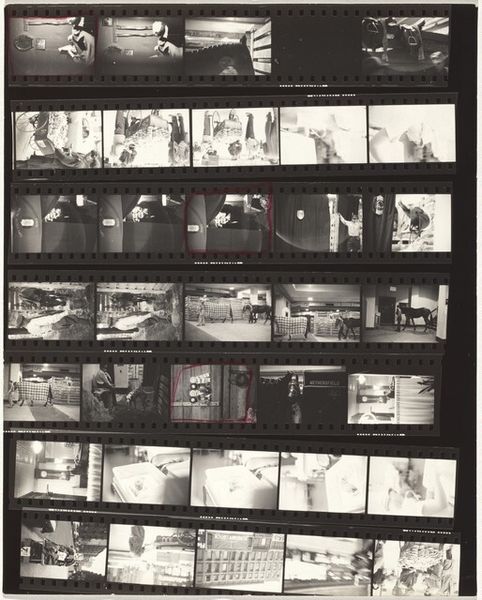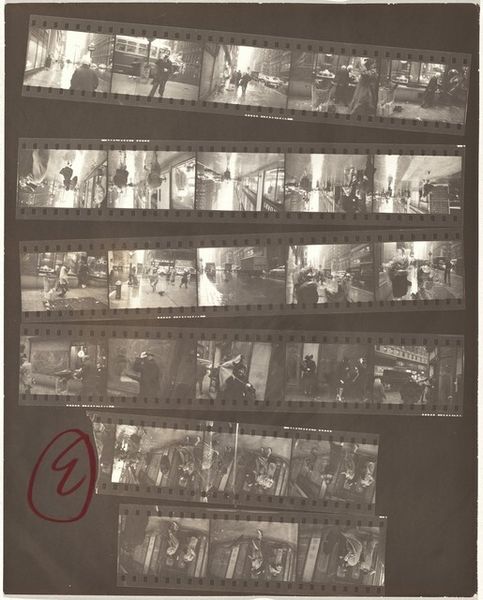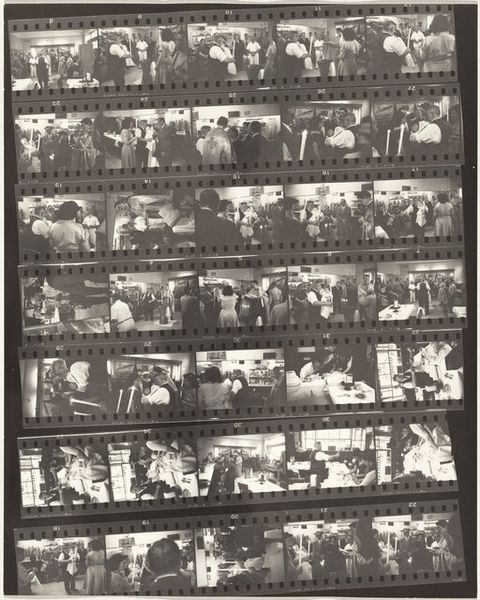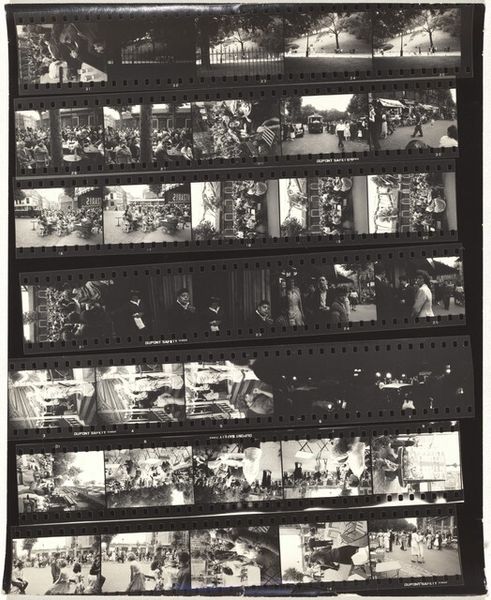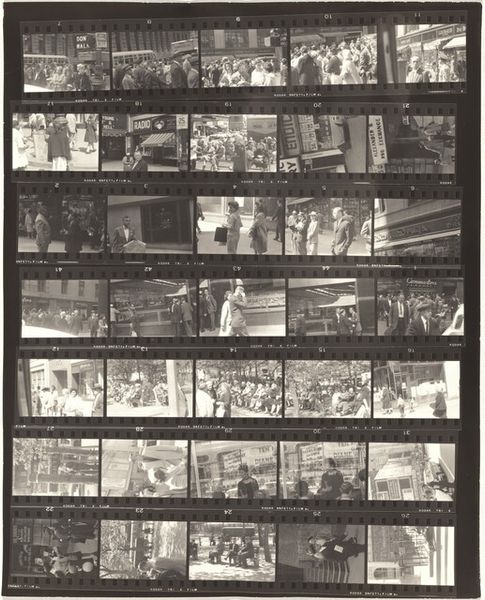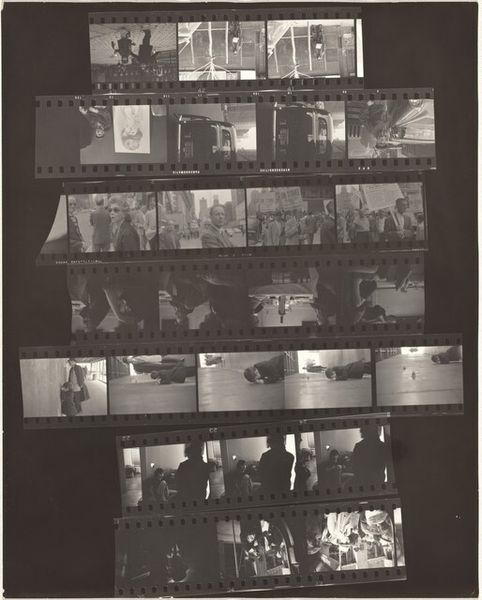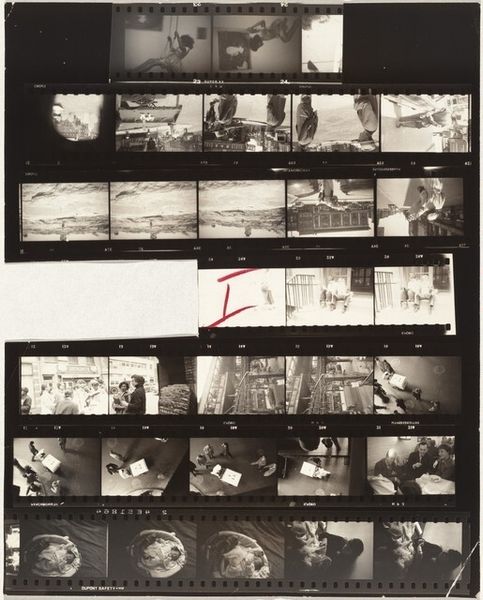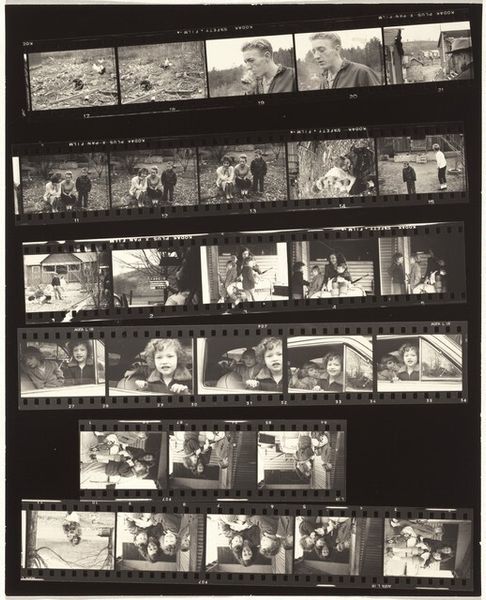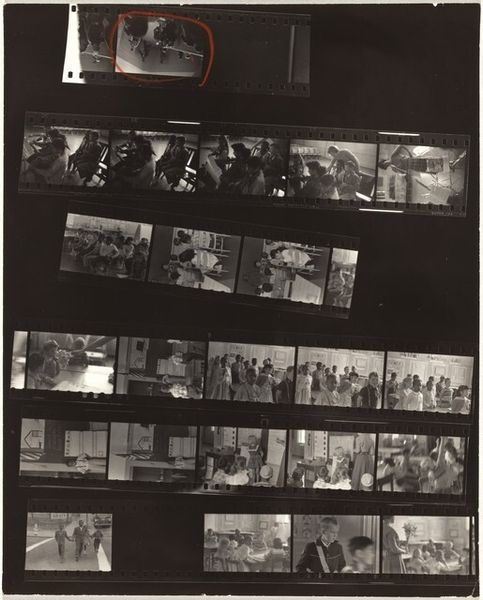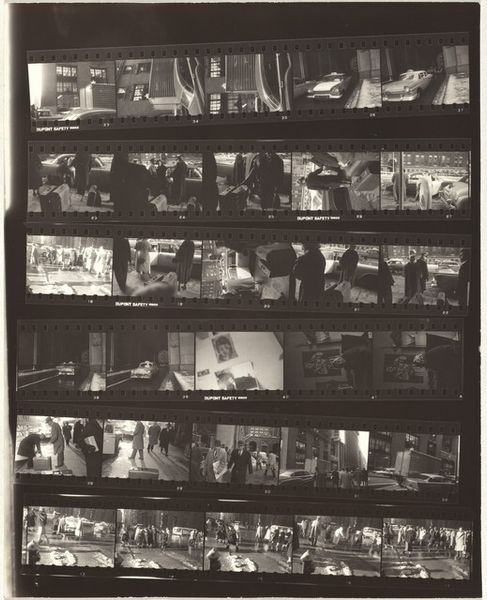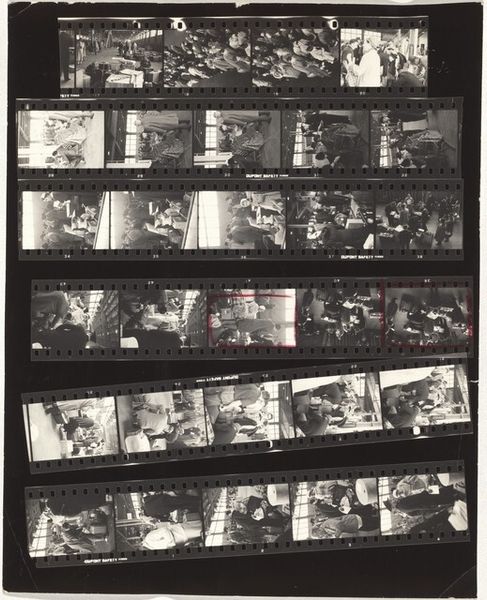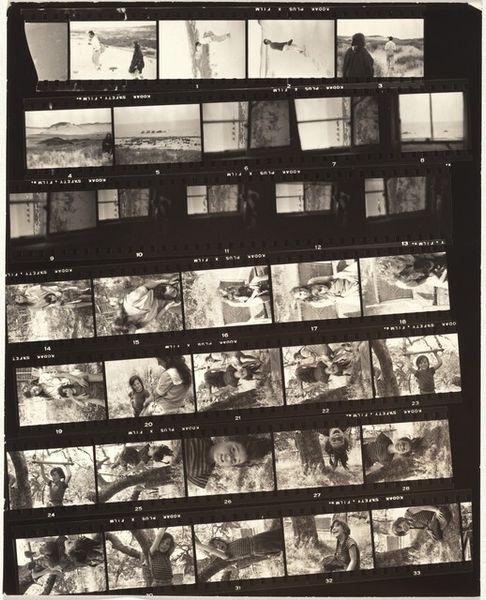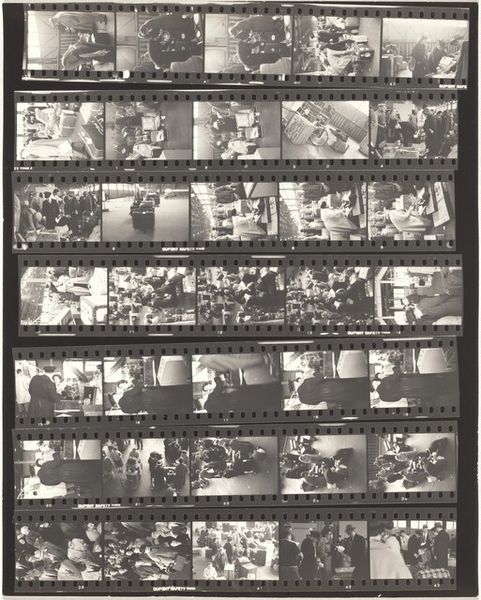
Dimensions: overall: 25.2 x 20.3 cm (9 15/16 x 8 in.)
Copyright: National Gallery of Art: CC0 1.0
Curator: Looking at Robert Frank’s 1955 contact-print, "Guggenheim 178--Miami, Florida," what's your first impression? Editor: Claustrophobia. All these frames packed so tightly. It’s like a surveillance reel of postwar American life in Miami, the images competing for space, giving an almost suffocating impression. Curator: Indeed, Frank’s use of the contact sheet format reveals the photographer’s process—a direct connection between the raw material and the final selection. Each frame, a fleeting glimpse, capturing candid moments on Miami streets. Consider how he democratizes image-making, breaking down traditional notions of the singular, perfect shot. Editor: Absolutely. But it's more than just a record. Note how recurring motifs and figures link the individual frames. I see women in similar dresses, repetitive architectural details and it seems as if there are particular icons to the wealthy class displayed. A narrative starts to form across this matrix—a statement, perhaps, about homogeneity within a vibrant location like Miami, echoing broader cultural themes from the era. Curator: Fascinating insight. By showing the entirety of the filmstrip, Frank showcases not just the captured images but the waste, the errors inherent in the photographic process. It becomes a statement about the labor of documenting daily life, the sheer amount of material needed to distill a particular vision. How labor intersects with privilege is very relevant in the Miami setting. Editor: It all suggests transience and a feeling of disconnect too. Despite the proximity, figures barely engage; we get these fragmentary views hinting towards a narrative left unfinished. I’m reminded of postwar anxieties around social interactions, or even moral complexities that the symbols that should represent prosperity, perhaps fail to provide to all? Curator: That reading provides rich ground for exploration. The materiality itself — the darkroom production, the physical sheet of celluloid—reveals how photography reshaped the representation of urban space and societal relationships. By exposing his production process, Frank acknowledges the value of manual processes in visual storytelling, elevating a usually functional artefact to a thought provoking work of art. Editor: Ultimately, it is the juxtaposition of the intimate, personal process laid bare, that contrasts the potential alienation of modernity that resonates with me here. The images leave lingering questions and demonstrate a psychological depth beneath a façade of post-war American boom. Curator: An excellent synthesis of our interpretations; thanks. Editor: Likewise.
Comments
No comments
Be the first to comment and join the conversation on the ultimate creative platform.

